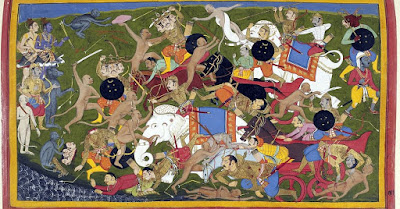IN A FEW WORDS AND POINTS- UMBERTO ECO
UMBERTO ECO- A STUDY
- Umberto Eco( 1932-2016) was an Italian novelist, literary critic, philosopher, semiotician, and university professor.
- He is best known for his 1980 internationally acclaimed historical murder mystery novel, The Name of the Rose.
- The work combines semiotics, biblical analysis, medieval studies and literary theory.
NOVELIST
- THE NAME OF THE ROSE (1980)
- Debut novel
- Setting: Italian monastery, in the year 1327
- Protagonist: Francisian friar William of Baskerville
- Narrator: Adso of Melk
- It was translated into English by William Weaver in 1983 including Foucault's Pendulum
- The pendulum of the title refers to an actual pendulum designed by French Physicist Leon Foucault to show earth's rotation.
- The satirical novel has reference to ' conspiracy theory'.
- Characters: Three vanity press employees ( Belbo, Diotallevi, and Casaubon)
- The three invent their own 'conspiracy theory', The Plan and become increasingly obsessed with it forgetting that it is just a game.
- Later, The Plan becomes a target of other conspiracy theorists and real secret society- Knights Templar
3. THE PRAGUE CEMETRY (2010)
- Translated by Richard Dixon in English.
- Main character: Simone Simonimi
- He works for the Piedmont Government secret service
- It has the theme of antisemitism.
PHILOSOPHER
- He entered the University of Turin to take up medieval philosophy and literature. Upon writing his thesis on Thomas Acquinas, he earned Laurea degree in philosophy in 1954.
- His degree in philosophy paved way for The Development of Medieval Aesthetics.
LITERARY CRITIC AND SEMIOTICS
- Eco argued, in his " The Open Work", that literary texts are fields of meaning, rather than strings of meaning. The literary texts are open engaging fields in contrast to the closed text which are least rewarding.
- Eco developed interpretative semiotics and his concept is elaborated in The Absent Structure(1968), A Theory of Semiotics (1975), and such others.



Umberto Eco in a nutshell. Thank you for this rich yet crisp writeup.
ReplyDelete